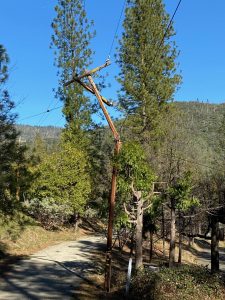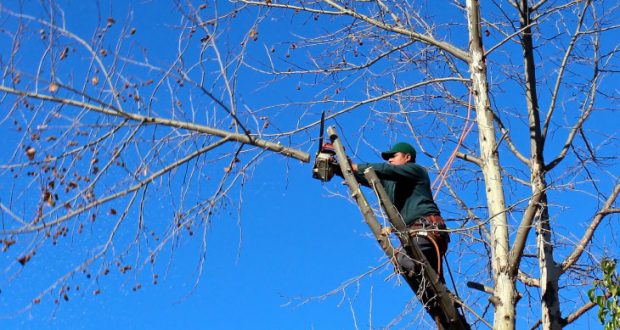As More Cameras, Weather Stations and Grid Devices Were Installed, Re-engineered Circuit Settings Cut Ignitions. The Path Begins to Put 10,000 Miles of Powerlines Underground
Mountain Communities — Pacific Gas and Electric Company (PG&E) reached major milestones in 2021 in reducing the risk of wildfires to improve the safety of the electric system. The safety work was a part of PG&E’s Community Wildfire Safety Program (CWSP), designed to strengthen the electric system and reduce wildfire risks to help keep customers and communities safe.
With the ongoing drought conditions and California’s severe weather, wildfire prevention is a top focus for PG&E. Nearly one-third of PG&E’s electric lines are in High Fire-Threat District (HFTD) areas, as designated by the California Public Utilities Commission (CPUC). These wildfire safety initiatives were part of a comprehensive strategy to help address this growing risk.
“We have taken a stand as a company that catastrophic wildfires shall stop,” said Sumeet Singh, PG&E’s Chief Safety and Risk Officer. “As the climate risk increases in our state and we continue to experience ongoing drought conditions, we have to stay ahead and plan for a system that is safer and more reliable for our customers and our hometowns. Although we made significant progress in 2021, we know we have more work to do.”
Through its 2021 wildfire safety work, the company:
Improved the Public Safety Power Shutoff (PSPS) Program, using advanced weather forecasting technology and 307 new sectionalizing devices, to impact 80,392 customers total in 2021, which is a significant decrease from outages that impacted 653,059 customers in 2020 (88% smaller) and 2,036,017 customers in 2019 (96% smaller).
PSPS criteria was also improved, accounting for trees that may be tall enough to strike powerlines.
- Launched an initiative to underground 10,000 miles of distribution powerlines in and near high fire-threat areas and hardened 211 distribution circuit miles to increase system resiliency, making the total number of miles hardened since 2018 1,476.
- Performed enhanced vegetation management, exceeding state safety standards, across 1,983 miles in areas with the highest wildfire risk to manage trees that posed a risk to electric distribution powerlines and equipment, increasing our total line miles completed to 6,359.
- Installed 308 weather stations to help prevent and respond to the risk of wildfires by improving forecasting capabilities, meeting the multi-year goal of over 1,300 total systemwide.
- Tested artificial intelligence software on 46 of the 153 high-definition cameras installed in 2021, with more than 500 total installed since 2018 across the system, to differentiate between smoke, fog, and other false indicators and help proactively respond to wildfires and engineered circuit settings to increase the speed at which safety devices turn off power in response to faults, an initiative known as Enhanced Powerline Safety Settings (EPSS).
As a result of these changes, PG&E was able to significantly reduce wildfire risk for customers in 2021. Notably, as of Oct. 20, 2021, PG&E reduced reportable ignitions in EPSS circuits by 80% using its EPSS Program compared to the prior three-year average.
In 2022, PG&E plans to continue to evolve its wildfire safety efforts by further strengthening the electric system to withstand severe weather and providing additional support for our customers and our hometowns during safety outages.
“Our unwavering focus is to ensure everyone and everything is always safe,” said Singh. “Our thousands of PG&E coworkers and contract partners, dedicated to wildfire prevention and mitigation, are laser-focused on making sure that every day the system is safer than the day before.”
PG&E will provide details on its upcoming wildfire mitigation efforts in the 2022 Wildfire Mitigation Plan, which will be filed in late-February of 2022. For more information on PG&E’s 2021 wildfire safety work, visit
Previous articles here




